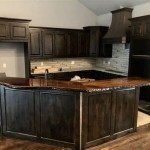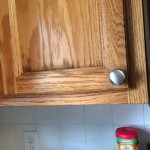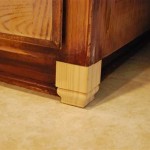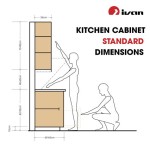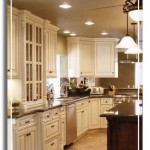Termites In My Kitchen Cabinets: A Guide to Prevention and Treatment
Termites, the silent destroyers, can pose a significant threat to your home, and your kitchen cabinets are no exception. These wood-eating insects can cause extensive damage to your cabinetry, weakening the structure and compromising the integrity of your kitchen. If you suspect termites in your kitchen cabinets, it's crucial to take action promptly to prevent further damage and safeguard your home.
Identifying Termites in Kitchen Cabinets
Termite infestations can be difficult to detect, as they often occur out of sight. However, there are several telltale signs that can indicate their presence:
- Mud tubes: Termites build mud tubes to travel between their nests and food sources. These tubes are typically found along walls, floors, or cabinets and can be a clear indication of an infestation.
- Discarded wings: Termites shed their wings after swarming, and discarded wings can be found around windows or doors. Finding these wings suggests a recent infestation.
- Wood damage: Termite damage appears as hollowed-out wood with visible tunnels or galleries. If you notice soft or crumbling wood in your cabinets, termites may be present.
- Frass: Termite droppings, known as frass, look like small, sawdust-like pellets. Finding frass near cabinets or in drawers is a sign of termite activity.
Preventing Termite Infestations
The key to preventing termite infestations is to eliminate attractants and create an unfavorable environment for them:
- Moisture control: Termites thrive in moist environments, so it's essential to keep your kitchen dry. Regularly check for leaks, fix any plumbing issues promptly, and use a dehumidifier if necessary.
- Wood contact: Avoid direct contact between soil and wood in your kitchen. Ensure that cabinets are elevated off the floor and that any exposed wood around pipes or appliances is sealed.
- Mulch and debris: Termites can build nests in mulch or debris around your home. Keep mulch away from the foundation and regularly remove any leaf piles or other debris.
- Regular inspections: Regularly inspect your kitchen cabinets, particularly in dark corners and along the edges, for any signs of termite activity.
Treating Termite Infestations
If you suspect or confirm a termite infestation in your kitchen cabinets, it's crucial to seek professional pest control services immediately. Termite treatments may involve:
Baits
Baiting systems attract termites with food that contains an insecticide. Termites carry the bait back to their colony, poisoning the entire population.
Chemical Barriers
Chemical barriers are applied around the perimeter of your home or inside cabinets to create a protective zone that repels termites.
Fumigation
Fumigation involves sealing your kitchen and releasing a gas that kills termites throughout the space. This method is typically used for severe infestations.
Conclusion
Termites in kitchen cabinets can be a serious problem, but with early detection and appropriate treatment, you can protect your home from extensive damage. By understanding the signs of termite infestations, implementing preventive measures, and seeking professional help when necessary, you can ensure the safety and longevity of your kitchen and your home as a whole.

8 On Your Side Investigates Owner Claims Termites Came With New Cabinets

How To Get Termite Free Kitchen Tips Jumbo Ss Kitchens

Worker Termites Discovered In Kitchen Doityourself Com Community Forums

3 Best Tips To Ensure Your Kitchen Cabinet Are Termite Free Alloy

Drywood Termites Damage In Cabinets Palm Harbor Coby S Tentless Termite Control

Frass In Kitchen Cabinets Bugguide Net

Where Termites Live Inside Homes

Termites In Furniture Terminix

8 Tips That Will Ensure You Have A Termite Free Kitchen

What To Do If You Have Termites At Home With Ashley
Related Posts

